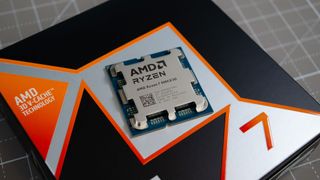
Share Tweet Share Share Email Space exploration is long on the list of exciting game themes to appeal to gamers, from early space shooters to modern exploration simulators. Video games have allowed players to experience some of the wonders of the cosmos, though in rather paltry and at times fantastical manner. However, it is probably the least explored aspect in this regard-taken together with space-because microgravity, or near-weightlessness, is what astronauts actually experience in space.
Microgravity permeates everything from how objects move to relationships with their environment. One of the peculiar opportunities that this evolution gives is including effects of microgravity by developers in games, which may add a dose of realism and immersion to simulations. The challenge of simulating microgravity in games One of the largest challenges that gaming developers face is simulating the physics of travel in space and microgravity.
Traditionally, games rely on gravity as the primary force which dictates movement for characters, objects, or even projectiles. In space, however, this force is dramatically reduced, and things behave contrary to whatever intuition should be there. Therefore, it means that it will require programmers to not only factor in zero-gravity mechanics but also the intricacies of inertia, momentum, and frictionless environments.
There is no ground or floor in space to offer resistance, and that creates differences with character behavior and object behavior. For instance, a character operating in microgravity can themselves launch into any direction if only they push off surfaces, but they will continue going until running into something else or deliberately changing their velocity. These movements turn game developers into highly detailed models of physics, incorporating newtonian mechanics and the three laws of motion.
The challenge here is that under the constraints of the game engine, such movements may not feel natural to the player but remain fun and interesting. There is also rotational dynamics that need to be represented realistically, especially in those microgravity-type simulations. Such low gravities create small forces that can cause things to spin or oscillate infinitely.
That sometimes means that the developer has to design mechanics based on how things might continue rotating when thrown or pushed, and this will sometimes call upon the player to account for unintended spins or erratic movements as part of the gameplay. The Impact of Microgravity on Character Movement Both terrestrial and microgravity environments impact the character. The most compelling application of simulated microgravity is in the influence it exerts on a character’s movement.
Character movements are confined to actions such as walking, running, and jumping because of tethers that moor the character and tie them to the gravity of their natural form. Overall, however, the traditional methods of locomotion simply break down completely within a microgravity environment. Developers must pen entirely new movement mechanics if a character is to glide, pivot, or otherwise thrust itself forward.
This would open up a vast number of game design possibilities by offering new movement mechanics. For example, it is possible that a player floats freely in space within some spaceship or on the surface of an asteroid and has to navigate through a bunch of interconnected environments by propulsion systems or tethering devices. This allows for a completely new dynamic for exploration games where players have to consider their momentum and orientation before making a move.
Since friction no longer plays a part, momentum, therefore, becomes an important variable in that microgravity environment. From typical games, stopping movement using controls is only stopping, but in microgravity, stopping could be much more difficult. Gaming development companies have to design systems which would allow a player’s chance to manipulate their own momentum and velocity within the possibilities of being realistic and enjoyable.
Some of these might be thrusters or repulsors; hence the player will have control over switching direction or speed or to stop. The absence of mobility by the zero-gravity atmosphere is another, more significant constraint. The characters that are in space need to move without the stabilization already known, and they can rely mostly on their arms and legs to push off surfaces or objects for movement.
The idea could be put into the core mechanics of the game, forcing the player always to think ahead and plan accordingly when moving to guarantee avoiding obstacles, enemies, or other hazards. Effects of Microgravity on Combat and Puzzle-Solving Movements Apart from changing one’s movement style, microgravity fundamentally changes the way a player interacts with the game environment, particularly in action and puzzle scenarios. Whereas players are accustomed to fighting on solid ground and applying gravity for their own benefit when jumping, dodging, or even in hand-to-hand combat, none of these strategies apply in a microgravity environment.
Combat scenes have to be restaged from a different perspective. For example, in space combat games, the lack of gravity and reduced resistance in space must be incorporated into the projectile and weapons systems. Bullets, missiles, or even energy blasts are likely to range a significantly greater distance than in ground environments, and game players must be able to anticipate the trajectory of their attacks over those distances.
Projectiles were bouncing off walls and hitting obstacles in a way that may give an additional layer of sophistication to the whole combat system. This would force the developers to rethink, in such special conditions, some of their basic approaches to combat, aiming, recoil, and damage falloff. Microgravity will probably open numerous imaginative avenues of puzzle-solving in puzzle-solving games.
For example, the player may have to move around things, change the environment, or use momentum of their bodies to resolve certain problems. Problems introduced by the physics of microgravity would really force players to think outside the box because it gives them tools that would let them manipulate gravity, inertia, or momentum. For studios looking to bring such innovative gameplay to life, hire unity game developers can help craft and integrate these mechanics seamlessly.
The Potential of Realistic Space Exploration Games This might make a space exploration game more crucial-add microgravity forces which make the player always think about their motion within the microgravity. The developer can design the whole space station or planetary surface, which is essentially dynamic and interactive but with different gravity wells, obstacles, or structures players have to adapt to as they explore. A good continuation might have also taken the concept of weightlessness further into the surroundings in the game world by perhaps spaceships being entirely an interior where items freely float around, and there are ways to hold it down with the body and features of the ship and so forth.
This is combined with environmental storytelling with objects floating in space about telling a story of someone’s past journey or some sort of accident. As the realism of space-exploration games is pushed a little further, microgravity will be a feature that creates much authenticity. Developers may simulate various gravitational environments with low gravity at the Moon’s surface and zero gravity at deep space.
Each of these environments would create its own unique circumstance requiring adaptation in the methods of movement, tactics, and problem solving. Conclusion: The New Game Design Frontier As the entertainment industry shapes up, incorporating microgravity into game mechanics could create an entirely new dimension in reaching more realism and complexity in space-themed games. It challenges designers to rethink fundamental gameplay elements such as movement, combat, and puzzles, offering new ways to engage with the player and enhance immersion.
Exploring the possibilities of microgravity in game design would unlock new avenues for developing innovative, challenging gameplay not only more authentic but potentially to encourage people to explore space in new ways. More and more games would see physics of space take their own stride in defining new limits in interactive entertainment with the technology getting better. The future of space games is bright, fueled by realistic simulations of microgravity, endless possibilities.
Related Items: Simulating space physics , The role of microgravity in game design Share Tweet Share Share Email Comments.














